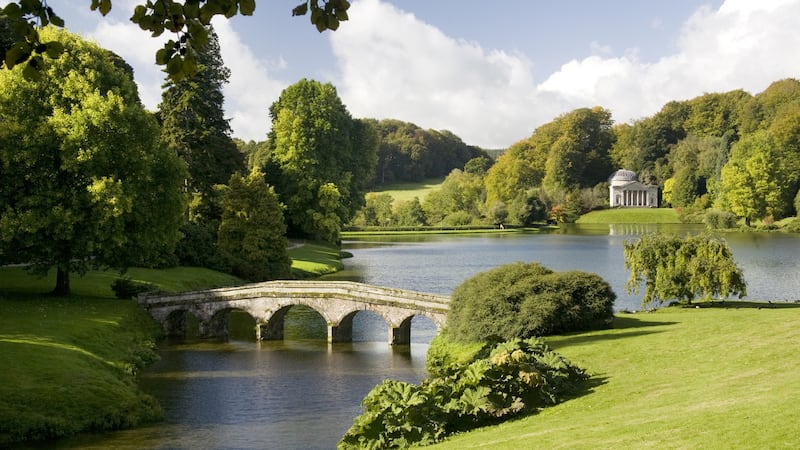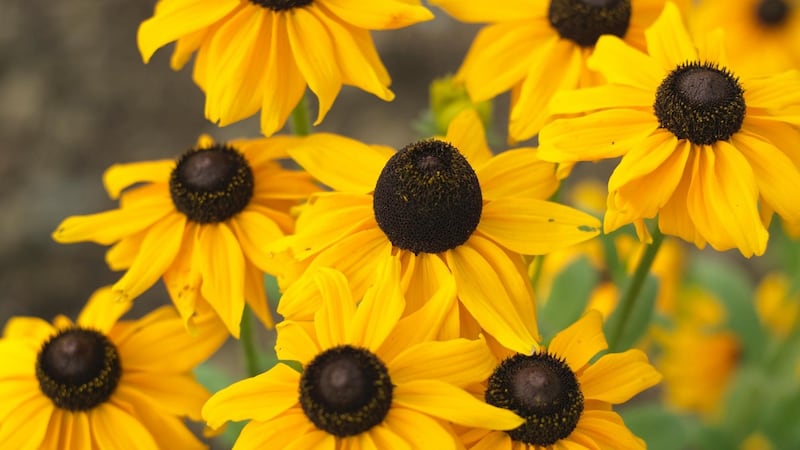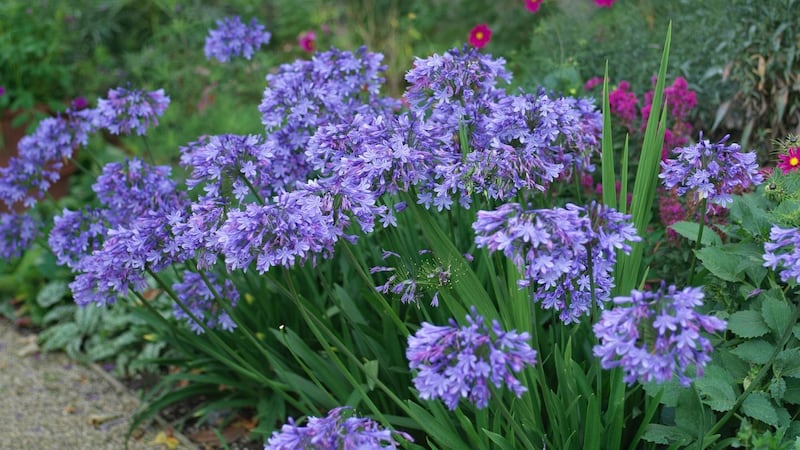If the world of professional horticulture was a plum tree, then the job of head gardener of a large, historic, well-funded estate would be one of its ripest, juiciest but hardest-to-reach fruits. Many covet it but very few get to take a bite, which makes the story of Cork-born Alan Power's journey from "a shy, young teenager who didn't even know that horticulture could be a profession" to head gardener and estate manager of world-famous Stourhead in the UK all the more impressive. Ask him who or what sowed the seeds of his boyhood love of horticulture and Power immediately singles out his mother, Elma, a passionate gardener and world-class flower arranger who lives in Cork with his father, Michael.
“In my early teens, we moved house. Not very far, just from one part of suburban Cork to another, slightly less suburban part but I’ll always remember how Mum managed to magically ‘pack up’ the garden and take it with us… That was the moment I was hooked.”
Ever since, Power has had what he describes as "a hunger for horticulture", a quality he believes that all successful head gardeners share. "I've never stopped learning and never stopped wanting to learn. In fact, the older I get, the more I appreciate how vast and complex the subject is and how much intelligence goes into doing the job well." After completing the Leaving Cert in 1989, that thirst for knowledge led him straight to Writtle College in Essex where he studied horticulture and then to Merrist Wood in Surrey where he studied arboriculture.
Why not study in Ireland? "There wasn't much on offer in the Ireland of the late 1980s-early 1990s, whereas Writtle [one of the oldest , largest and most-respected UK colleges specialising in land-based industries] and Merrist Wood [this multi award-winning UK college enjoys a similar international reputation/] were considered the places to go."
A mentor and hero
Power then worked briefly as an arborist/tree surgeon before his overriding love of plants and garden history drew him back into the wider world of horticulture. It also drew him, in 1995, to Stourhead, the centuries-old 2,500 acre historic estate in Wiltshire whose famous landscape gardens are managed by the National Trust. Replying to an advertisement for the post of gardener, he got the job and within 14 months was promoted to assistant head gardener.

It was here that Power met Peter Hall, then working as Stourhead's head gardener, a man he describes with clear affection and admiration as his friend, mentor and hero, "a gardener so good at gardening that if he sat on a wooden chair, it would grow roots. It's quite annoying, actually." Working under Hall, the young Cork man realised that the role of head gardener is equivalent to being "the conductor of a fantastic horticultural orchestra. Every decision, every tiny adjustment you make as head gardener will have an effect on the way people experience that garden, possibly for centuries to come. It's why it's so important to be as informed and researched as possible, whether it's trawling through old garden notebooks, reading the historical correspondence of previous owners or researching the optimum growing conditions for a particular plant."
While Power could have stayed on at Stourhead as its assistant head gardener, in 1999 his hunger for horticulture drew him to Mount Stewart in Co Down, yet another world-class National Trust garden where he took over as head gardener from another greatly respected horticultural veteran, Nigel Marshall, who was preparing for retirement. His reason for the move is similarly revealing of Power's singular drive and ambition. "If the job of head gardener at Stourhead ever came up, I wanted to be as ready as possible."
Job satisfaction
Almost four years later, when the position did became free, the Cork man threw his hat in the ring and the rest is history. Being given the job was, he admits, both exhilarating and daunting. “As the head gardener of an historic estate, as a gardener gardening someone else’s garden and in charge of a nine-person strong team, you can’t help but be aware of your responsibilities to observe, conserve and preserve, to respect historical accuracy and maintain great attention to detail. Yet you also need to be adaptable because gardens are forever in the process of change.”
What words of advice would he offer to young horticulturists-in-the-making, who similarly dream of one day becoming a head gardener? "My first would be to get some type of formal training, while my next would be to avoid rushing up the career ladder. Work hard, try to stay as open-minded as possible and be willing to take a few career 'jumps' early on to get as wide a range of experience as you can. I'd never have believed as a young teenager that one day I'd be in charge of a place like Stourhead, or giving garden history lectures, or working as a TV-presenter [Power is a guest presenter on the BBC show Gardeners World/], but I was always willing to go outside my comfort zone and stretch myself. I think that stood to me. Finally, don't expect to become a millionaire, instead the reward is great job satisfaction."
Alan Power will be appearing at next week's Ballymaloe Garden Festival (Ballymaloe House, Shanagarry, Co Cork, September 2nd-3rd) as one of its guest speakers. See Dates For Your Diary (below) for details
This Week in the Garden….
Seed ripening
The seed of many plants is ripening and in some cases is already ready to harvest. Examples include sweet rocket, astrantia, lunaria, cornflowers, species dahlias, calendula, nigella and orlaya. Signs that seed is properly ripened include the plant’s seed pods/ capsules drying out/ turning brown and beginning to split in preparation for spilling their contents, and the seeds themselves becoming darker/harder. Always try to harvest seed on a dry, still day, and place seedheads/pods/berries into a clearly-labelled bag. Remember that the seed of named F1/ F2 hybrids won’t come true to type.

Plant cuttings
Now is a good time to take semi-hardwood cuttings of plants such as pelargoniums, fuchsias, marguerites, salvias, rosemary, lavender, box, escallonia, holly, viburnum, camellia, cistus and choisya. Make sure to choose a healthy parent plant free from pests or disease and use a sharp, sterilised secateurs to take cuttings (10-15cm long) that are soft at their tip but firm at their base. These should be stripped of their lower leaves and then planted into a two-litre pot filled with good-quality seed-and-cuttings compost (roughly five cuttings per pot), before being labeled, watered, covered with a Ziploc plastic bag, sealed with an elastic band and then placed on a heated propagator out of direct sunshine.

Garden colour
Autumn may be beckoning but there are still plenty of plants that can provide a welcome burst of colour in the garden. Examples include species/ varieties of rudbeckia, helenium, agapanthus, aster, eupatorium, silphium, verbena, salvia, hydrangeas and dahlias, which are available to buy in most good Irish garden centres.
Dates For Your Diary
Ballymaloe Garden Festival (Ballymaloe House, Shanagarry, Co Cork, Saturday September 2nd-3rd), guest speakers include Alan Power (see main article), Helen Dillon, Klaus Laitenberger and Susan Turner as well as garden historian Caroline Holmes while the Ballymaloe Fringe Garden Festival programme includes plant sales, seed swapping and garden advice by experts including Tanguy de Toulgoet, Hugh Cassidy, Greta McCarthy and others. For more information/ to book tickets, see ballymaloefestivals.ie












